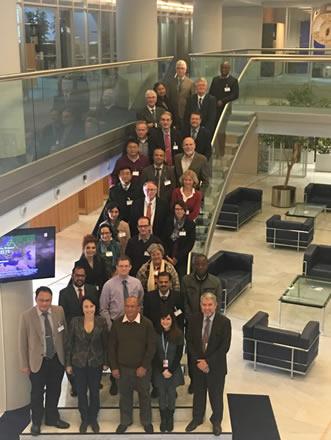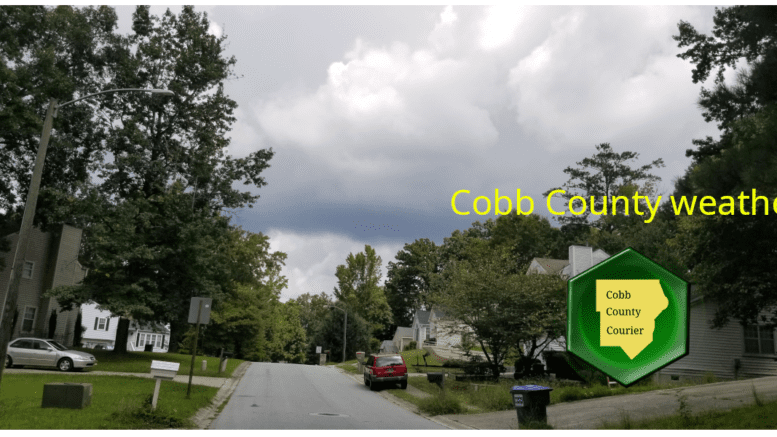International workshop on cataloguing and managing information on extreme weather, water and climate events – World Meteorological Organization WMO

Report on the International Workshop on Extreme Weather, Water, and Climate Events
Introduction and Strategic Context
An international workshop was convened by the World Meteorological Organization (WMO) at its headquarters in Geneva, Switzerland, from 20-23 November 2017. The workshop addressed the critical need to catalogue and manage information on extreme weather, water, and climate events. This initiative is a direct response to international policy frameworks aimed at averting, minimizing, and addressing the loss and damage associated with the adverse effects of climate change, thereby contributing significantly to the 2030 Agenda for Sustainable Development.
Alignment with Sustainable Development Goals (SDGs)
The workshop’s objectives and outcomes are fundamentally linked to the achievement of several Sustainable Development Goals. The systematic cataloguing of extreme events provides the foundational data necessary for evidence-based policies and actions that build resilience and mitigate climate-related impacts.
- SDG 13 (Climate Action): The primary focus of the workshop directly supports Target 13.1, which aims to strengthen resilience and adaptive capacity to climate-related hazards and natural disasters. Standardized data on extreme events is essential for tracking climate change impacts and informing effective adaptation strategies.
- SDG 11 (Sustainable Cities and Communities): By improving the tracking of losses and damages, the workshop contributes to Target 11.5, which seeks to significantly reduce the number of deaths, affected people, and economic losses from disasters. Accurate event data enables better urban planning and disaster risk reduction (DRR) in human settlements.
- SDG 1 (No Poverty) and SDG 2 (Zero Hunger): Extreme weather events disproportionately impact vulnerable populations and agricultural systems. Enhanced information management helps in designing interventions that protect livelihoods and food security, contributing to the eradication of poverty and hunger.
- SDG 17 (Partnerships for the Goals): The workshop served as a platform to foster collaboration among diverse stakeholders, including UN agencies, DRR communities, and scientific bodies. This aligns with SDG 17’s emphasis on multi-stakeholder partnerships to mobilize and share knowledge, expertise, and technology to support the achievement of all SDGs.
Workshop Objectives
The workshop brought together interdisciplinary experts from meteorology, climatology, information management, and disaster risk reduction to achieve the following objectives:
- To establish a common understanding and standardized definitions for hydro-meteorological hazards and extremes.
- To develop a framework for the unique identification and cataloguing of extreme events on national, regional, and global scales.
- To define the technical requirements for an infrastructure capable of hosting comprehensive databases on extreme events.
- To strengthen partnerships for the integrated management of science-based event information and associated loss and damage data, directly supporting SDG implementation.
Expected Outcomes for Sustainable Development
The anticipated outcomes of the workshop are designed to provide tangible tools and frameworks for advancing the Sustainable Development Goals:
- A revised and standardized list of hydro-meteorological hazards and their definitions to ensure data consistency for global monitoring frameworks, including those for the SDGs.
- Recommendations on a standardized structure for unique event identifiers, facilitating improved data sharing and analysis for global risk assessment in line with SDG 11 and SDG 13.
- A comprehensive list of requirements for a potential global database infrastructure, providing a critical tool for policymakers to track progress against climate and disaster-related SDG targets.
- The identification of strategic partnerships among WMO, UN agencies, and the DRR community, fostering the collaborative action required under SDG 17 to address information gaps and build global resilience to extreme events.
1. Which SDGs are addressed or connected to the issues highlighted in the article?
SDG 13: Climate Action
- The article directly addresses the “adverse effects of climate change,” including “extreme weather and climate events.” The entire purpose of the WMO workshop is to better catalogue and manage information on these climate-related hazards, which is central to SDG 13’s goal of taking urgent action to combat climate change and its impacts.
SDG 11: Sustainable Cities and Communities
- The focus on “Disaster Risk Reduction (DRR)” and the need to “track losses and damages” associated with extreme events connects to making human settlements resilient. By improving the management of information on hydro-meteorological hazards, the initiative supports efforts to reduce the impact of disasters on communities.
SDG 17: Partnerships for the Goals
- A key expected outcome of the workshop is the “Identification of potential partnerships among the WMO, United Nations agencies, non-governmental organizations, DRR communities and the Intergovernmental Panel on Climate Change.” This highlights the collaborative approach needed to address complex global challenges like climate change, which is the core principle of SDG 17.
2. What specific targets under those SDGs can be identified based on the article’s content?
SDG 13: Climate Action
- Target 13.1: Strengthen resilience and adaptive capacity to climate-related hazards and natural disasters in all countries. The workshop’s aim to create a “revised list of hydro-meteorological hazards,” develop “unique-identifiers of hazards,” and establish “global databases on extreme events” directly contributes to building the capacity to understand and manage climate-related hazards, thereby strengthening resilience.
SDG 11: Sustainable Cities and Communities
- Target 11.5: By 2030, significantly reduce the number of deaths and the number of people affected and substantially decrease the direct economic losses relative to global gross domestic product caused by disasters. The article’s emphasis on the “growing importance to track losses and damages” and creating “linkages to loss and damage information” directly supports the measurement and subsequent reduction of disaster impacts as outlined in this target.
SDG 17: Partnerships for the Goals
- Target 17.16: Enhance the Global Partnership for Sustainable Development, complemented by multi-stakeholder partnerships that mobilize and share knowledge, expertise, technology and financial resources. The workshop itself, bringing together participants from “meteorology, climatology, information management, Disaster Risk Reduction (DRR), risk transfer,” and its goal of identifying partnerships among various international bodies, is a clear implementation of this target.
3. Are there any indicators mentioned or implied in the article that can be used to measure progress towards the identified targets?
SDG 13: Climate Action & SDG 11: Sustainable Cities and Communities
- The article implies the need for indicators related to disaster impact by stating the importance of “track[ing] losses and damages.” The creation of “regional and global databases on extreme events” with “linkages to loss and damage information” is a mechanism to collect data for measuring:
- The number of people affected by extreme weather events.
- The economic losses associated with these events.
- Progress in institutional capacity is implied through the workshop’s expected outcomes, which can serve as indicators:
- The existence of a “Revised list of hydro-meteorological hazards and extremes and their definitions.”
- The development and adoption of a structure for “unique-identifiers of hazards and extreme events.”
SDG 17: Partnerships for the Goals
- An indicator for this goal is directly mentioned as an expected outcome: the “Identification of potential partnerships among the WMO, United Nations agencies, non-governmental organizations, DRR communities and the Intergovernmental Panel on Climate Change.” The number and effectiveness of these established partnerships would be a direct measure of progress.
4. Create a table with three columns titled ‘SDGs, Targets and Indicators” to present the findings from analyzing the article.
| SDGs | Targets | Indicators |
|---|---|---|
| SDG 13: Climate Action | 13.1: Strengthen resilience and adaptive capacity to climate-related hazards and natural disasters. |
|
| SDG 11: Sustainable Cities and Communities | 11.5: Significantly reduce the number of deaths, people affected, and economic losses from disasters. |
|
| SDG 17: Partnerships for the Goals | 17.16: Enhance the Global Partnership for Sustainable Development through multi-stakeholder partnerships. |
|
Source: wmo.int
What is Your Reaction?
 Like
0
Like
0
 Dislike
0
Dislike
0
 Love
0
Love
0
 Funny
0
Funny
0
 Angry
0
Angry
0
 Sad
0
Sad
0
 Wow
0
Wow
0
















































/environment-climate-change-and-health-(ech)/water-sanitation-hygiene-and-health-(wsh)/landfill-tuvalu-36092.tmb-1200v.jpg?sfvrsn=5c21fe40_1#)

.jpg.webp?itok=0ZsAnae9#)


























